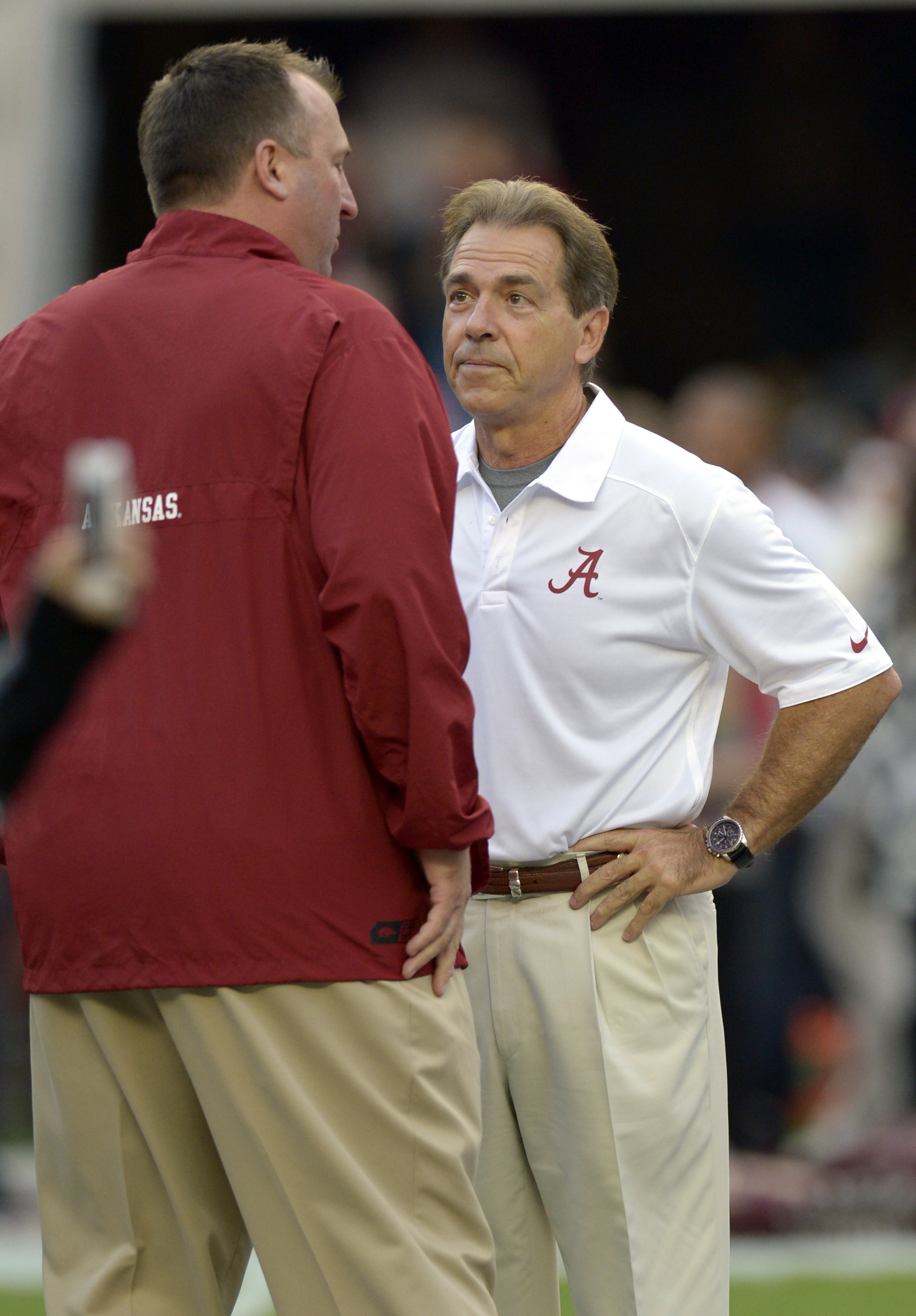
When offensive-minded college football coaches meet on the links after spring practice, you have to think they’ll at least snicker in the direction of Nick Saban, Bret Bielema and other advocates of the now DOA pace of play argument.
Remember when slowing down the game (thanks Oregon, Baylor and Johnny Manziel) was the talk of media days last summer?
Saban and Bret Bielema’s pleas fell largely on deaf ears as their opinions concerning safety issues were swept swiftly under the rug once the season began. Teams with uptempo offenses laughed at the gripes and eventually won the debate that studies show holds little to no validity.
“If you think pace of play has anything to do with injuries, you drank the wrong poison,” Arizona coach Rich Rodriguez said at PAC-12 media days in July 2014. “I think it would be hard to find any hard data that shows the pace of play contributes more to injury, but that’s my opinion.”
He was right.
Gus Malzahn and Kevin Sumlin, too.
“There’s no pertinent data that shows we had a safety problem,” Air Force head coach Troy Calhoun, the NCAA rules committee chairman, told CBSsports.com in a recent interview after college football’s governing body decided not to include slow-play regulations in this year’s proposed rule changes.
Saban’s defenses haven’t fared well against fast-paced offenses — specifically dual-threat quarterbacks — in recent years and Bielema argued speeding up tempo without the luxury of subbing defensively made the game unsafe. He asked the rules committee to prevent offenses from snapping the ball in the first 10 seconds of the play-clock, as did Saban.
South Carolina coach Steve Spurrier called the 10-second proposal ‘The Saban Rule’ and gawked at the thought of being told how to run his offense.
“It’s ridiculous,” Spurrier said. “Let’s let everybody keep playing the way they’ve been playing.”
What’s funny is that Alabama dramatically increased its pace of play last season under first-year coordinator Lane Kiffin. The Crimson Tide fired off an SEC-high 1,018 plays on offense — 192 more than the previous season. More snaps equaled better production, notably in the passing game.
Alabama’s 6,783 total yards of offense was the most in the Saban era.
Bielema and his staff have never had the best relationship with Auburn, though his beef with pace of play wasn’t necessarily directed at the Tigers. It didn’t look good however sandwiched between Bielema’s beef with Auburn’s game film during the 2013 season and press box elevator-gate during halftime of last year’s opener.
Bielema and Saban each come from the old-school huddle up and fire off the ball mentality, but one has already shown his willingness to change.
For those wondering, Baylor averaged the most offensive plays per game (87.5) last season while North Carolina led the country in snaps based on possession time (1 play/19.8 seconds according to David Hale, ESPN). Larry Fedora promised an exciting, hectic pace in Chapel Hill when he arrived and it didn’t take long for the Tar Heels to flex some offensive muscle.







